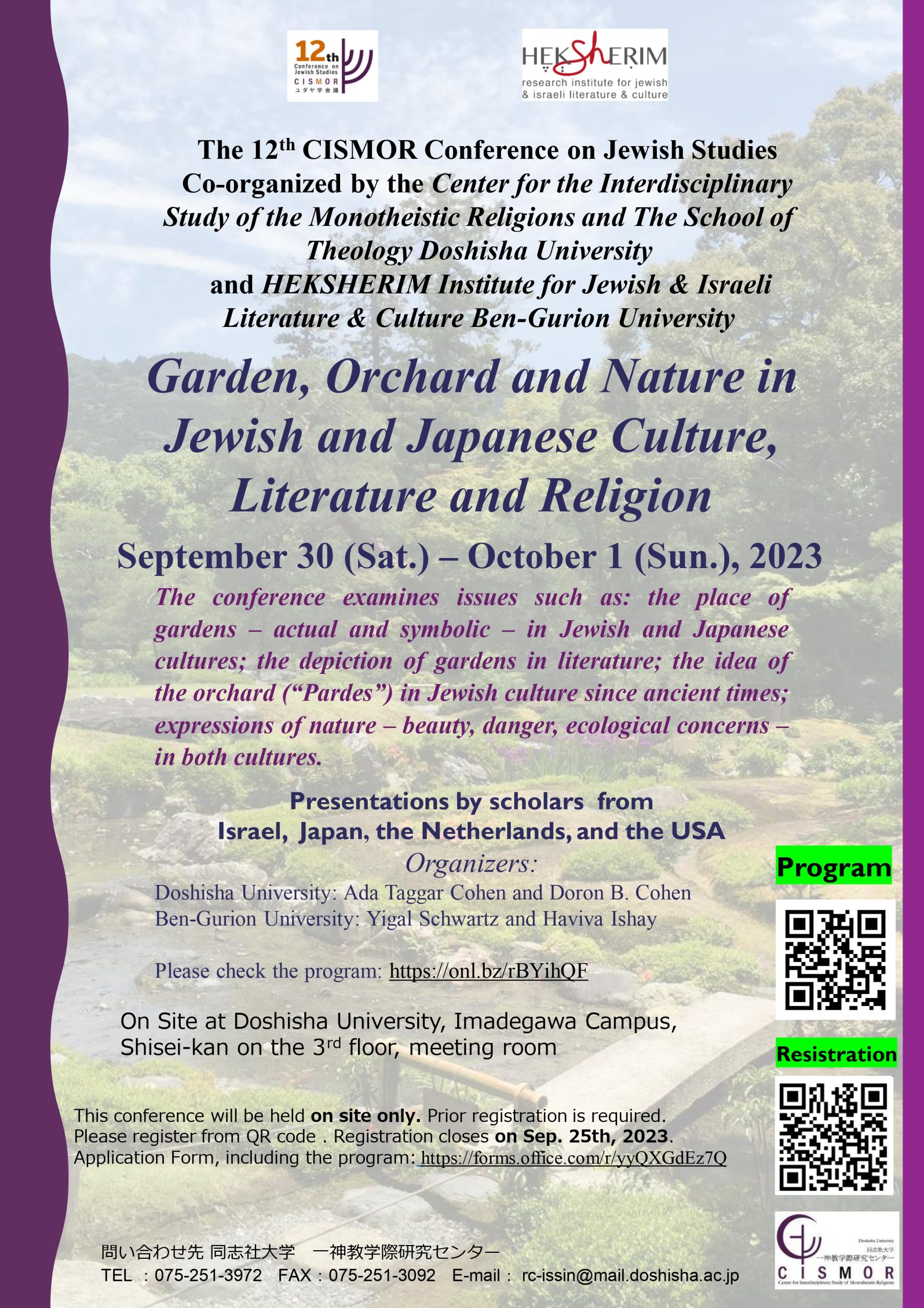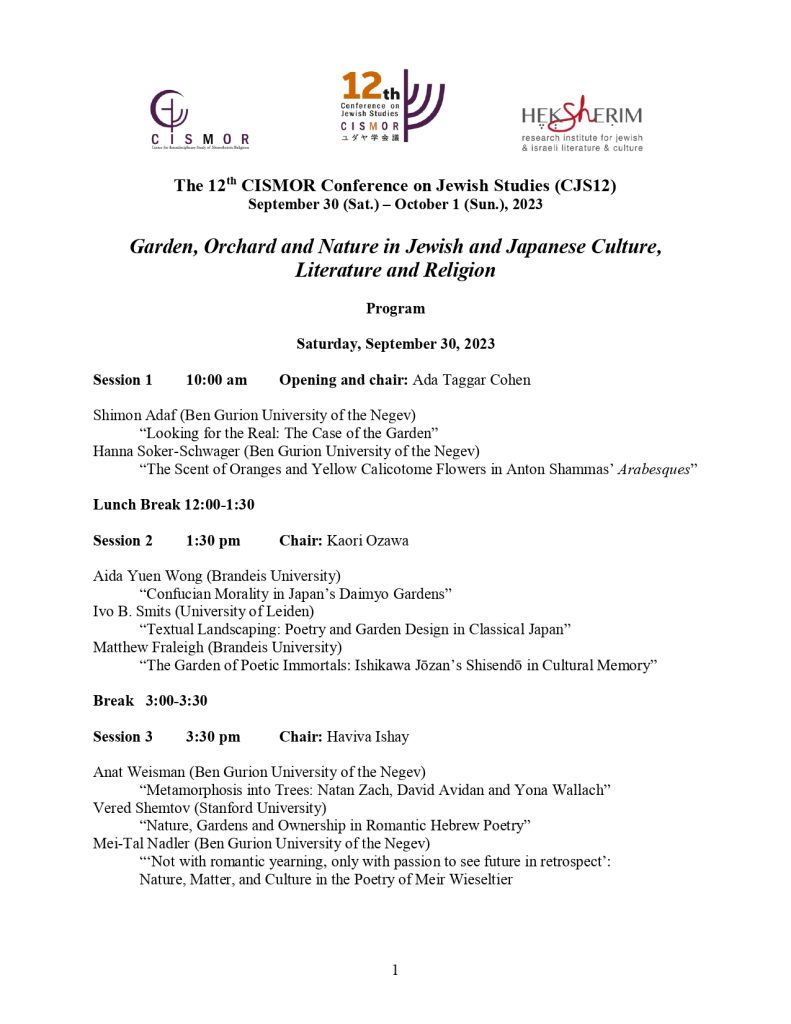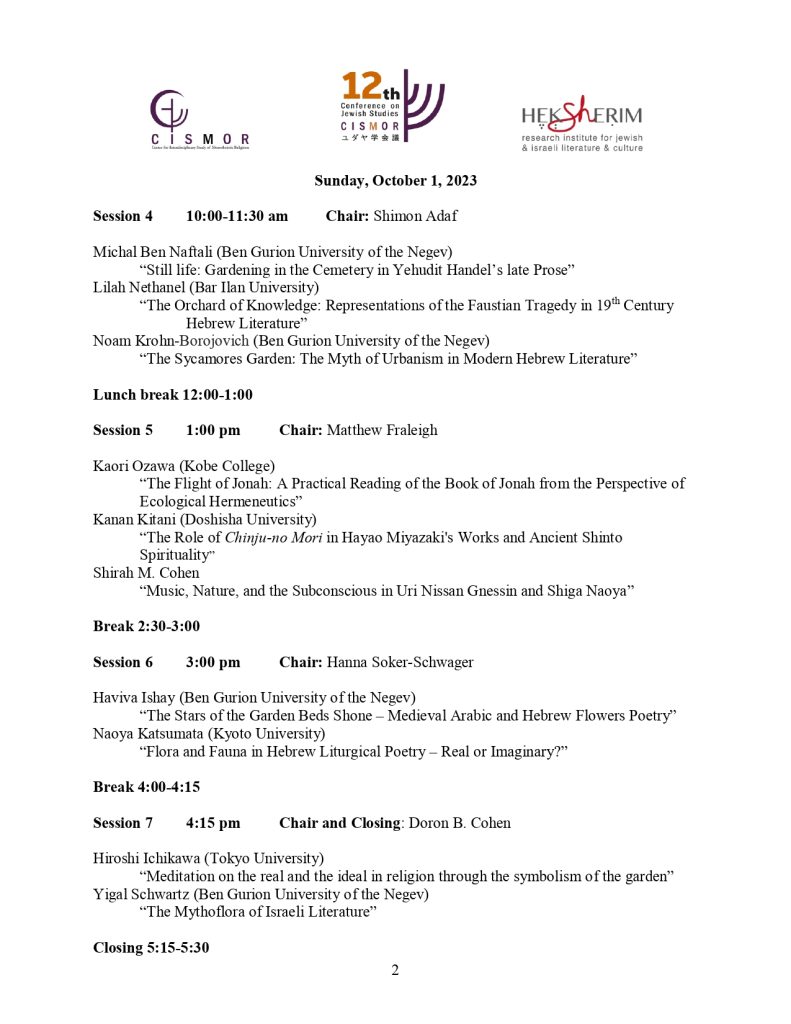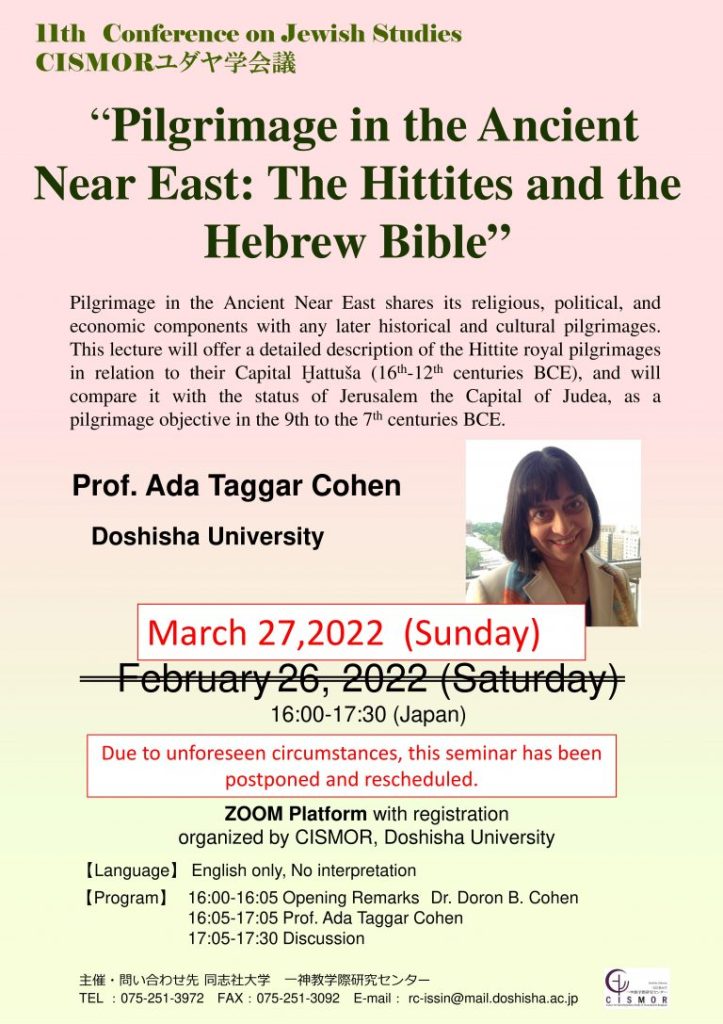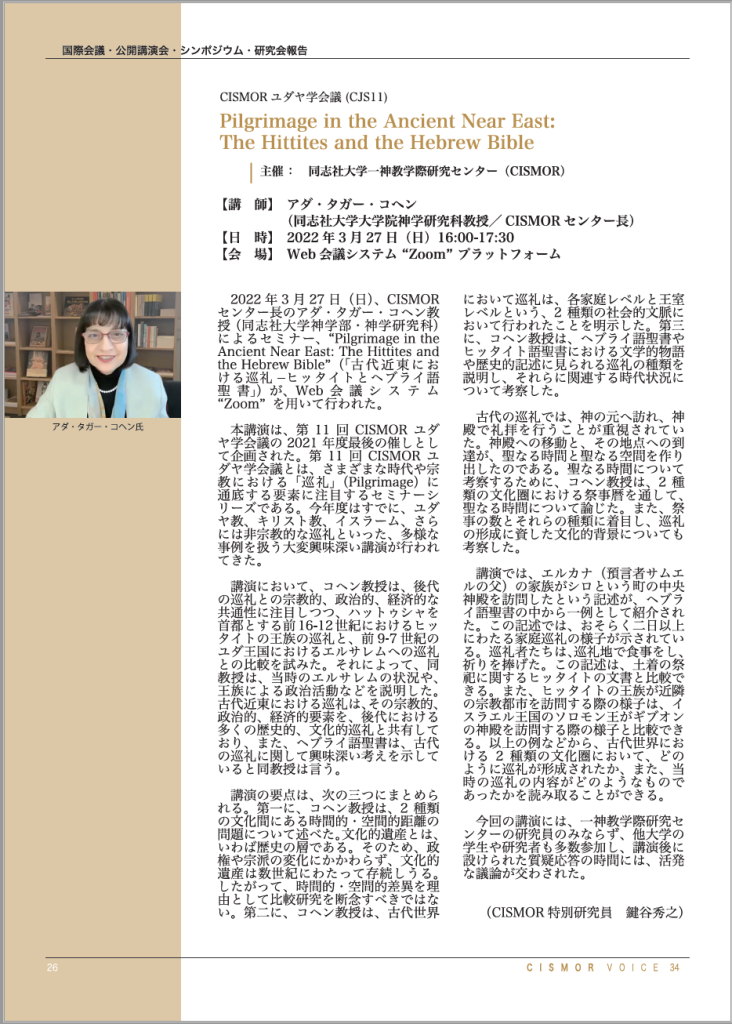Pubulications (CISMOR)
The 12th Conference on Jewish Studies
Garden, Orchard and Nature in Jewish and Japanese Culuture, Literature and Religion
2023/09/30-10/01
CJS12
Preface
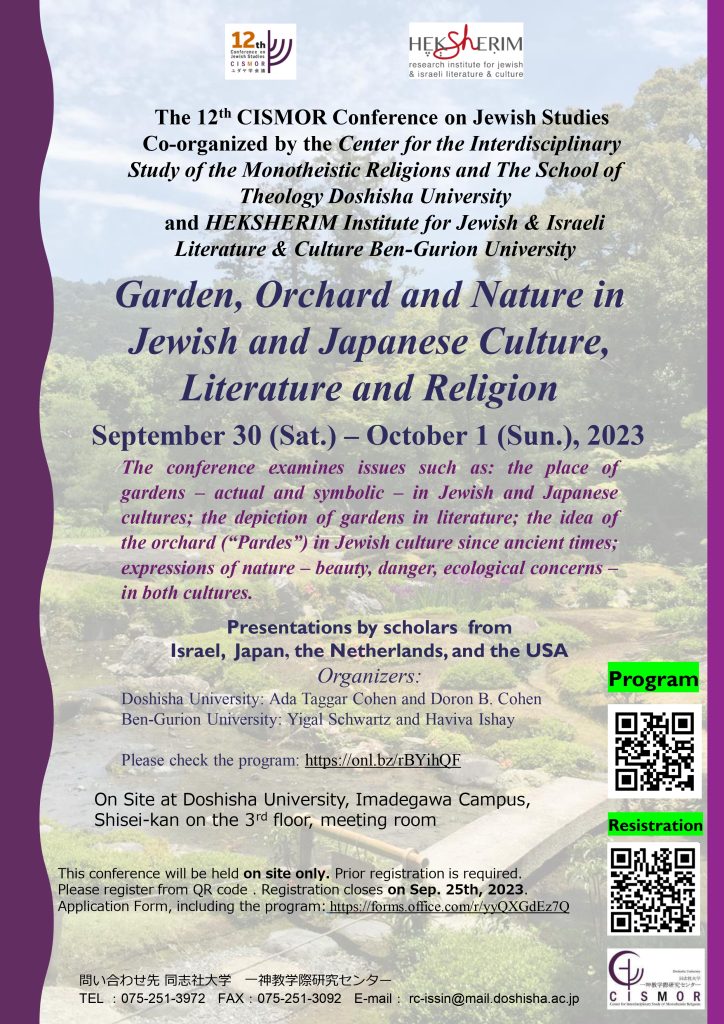
The conference examines issues such as: the place of gardens – actual and symbolic – in Jewish and Japanese cultures; the depiction of gardens in literature; the idea of the orchard (“Pardes”) in Jewish culture since ancient times; expressions of nature – beauty, danger, ecological concerns – in both cultures.
A report on the conference was published in Hebrew Higher Education (National Association of Professors of Hebrew, USA). See here for details.
The 11th Conference on Jewish Studies
Pilgrimage Through the Ages:
In Religious and Non-Religious Context
Pilgrimage in the Ancient Near East: The Hittites and the Hebrew Bible
2022/04/27
CJS11
Full Text
Lecturer : Prof. Ada Taggar Cohen
(Doshisha University)
Pilgrimage in the Ancient Near East shares its religious, political, and economic components with any later historical and cultural pilgrimages. This lecture will offer a detailed description of the Hittite royal pilgrimages in relation to their Capital Ḫattuša (16th-12th centuries BCE), and will compare it with the status of Jerusalem the Capital of Judea, as a pilgrimage objective in the 9th to the 7th centuries BCE.
Summary
Pilgrimage in Islam
2021/12/19
CJS11
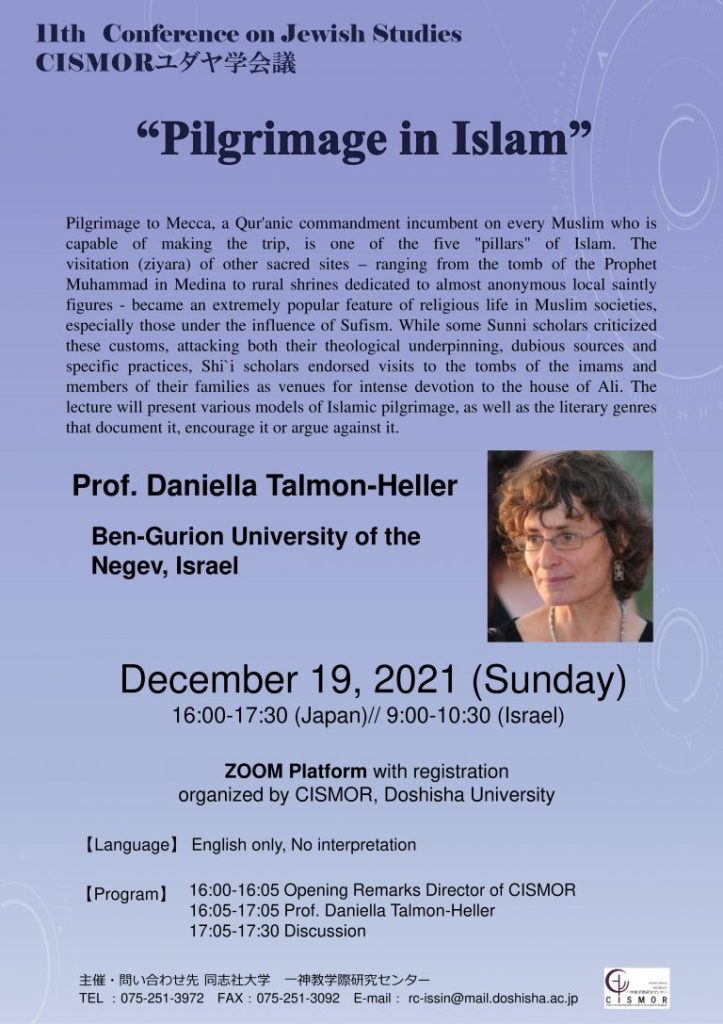
Lecturer : Prof. Daniella Talmon-Heller
(Ben-Gurion University of the Negev, Israel)
Pilgrimage to Mecca, a Qur’anic commandment incumbent on every Muslim who is capable of making the trip, is one of the five “pillars” of Islam. The visitation (ziyara) of other sacred sites – ranging from the tomb of the Prophet Muhammad in Medina to rural shrines dedicated to almost anonymous local saintly figures – became an extremely popular feature of religious life in Muslim societies, especially those under the influence of Sufism. While some Sunni scholars criticized these customs, attacking both their theological underpinning, dubious sources and specific practices, Shi`i scholars endorsed visits to the tombs of the imams and members of their families as venues for intense devotion to the house of Ali. The lecture will present various models of Islamic pilgrimage, as well as the literary genres that document it, encourage it or argue against it.
Summary
世俗社会の聖地巡礼
2021年11月07日
CJS11
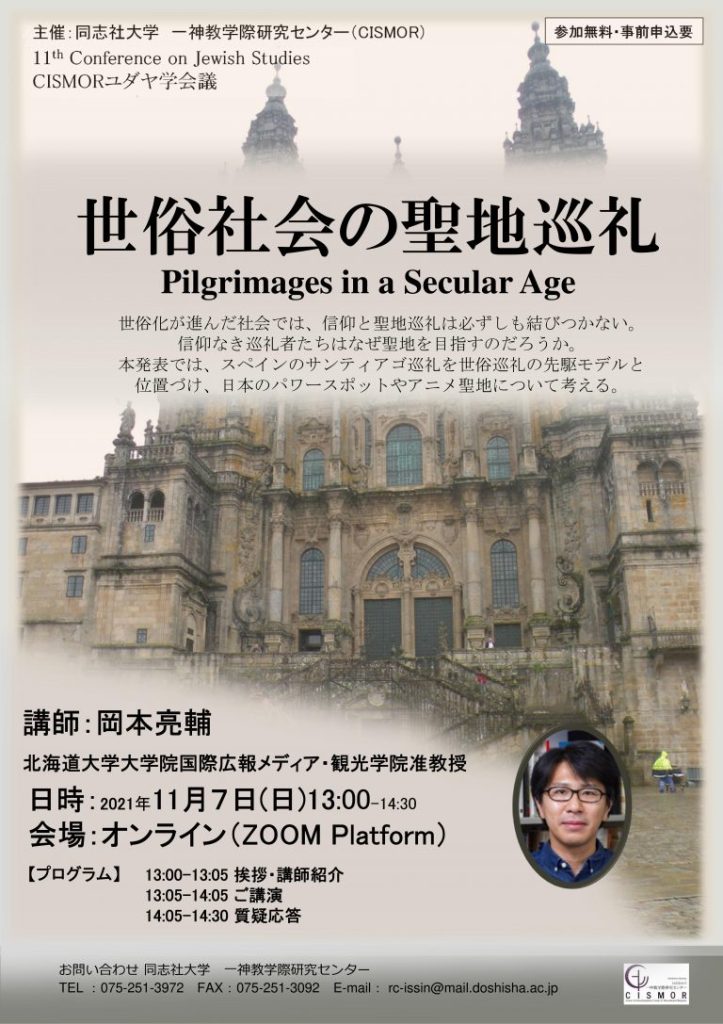
講師:岡本亮輔
(北海道大学大学院国際広報メディア・観光学院准教授)
世俗化が進んだ社会では、信仰と聖地巡礼は必ずしも結びつかない。信仰なき巡礼者たちはなぜ聖地を目指すのだろうか。本発表では、スペインのサンティアゴ巡礼を世俗巡礼の先駆モデルと位置づけ、日本のパワースポットやアニメ聖地について考える。
要旨
In secularized society, faith and pilgrimage are not necessarily linked. Why do non-believing pilgrims go to holy places? In this presentation, I will consider the pilgrimage to Santiago in Spain as a pioneering model for secular pilgrimage, as well as power spots and anime holy sites in Japan.
Summary
Loca Desiderarta: Sacred Space and Holy Land Pilgrimage in Christian Culture
2021/10/23
CJS11
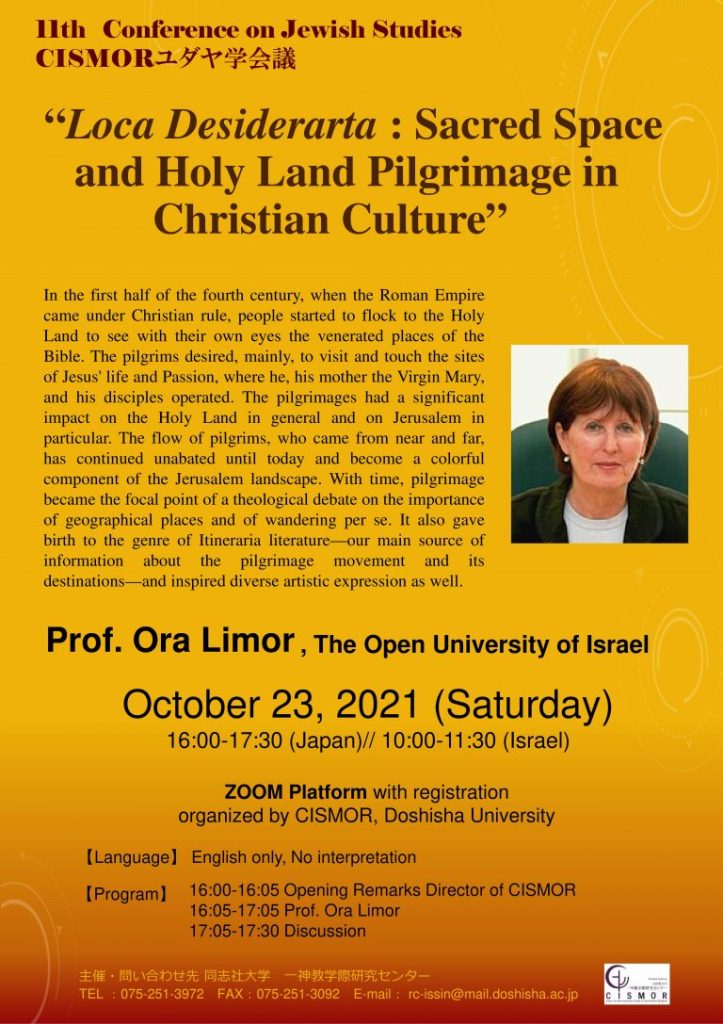
Lecturer : Prof. Ora Limor
(The Open University of Israel)
In the first half of the fourth century, when the Roman Empire came under Christian rule, people started to flock to the Holy Land to see with their own eyes the venerated places of the Bible. The pilgrims desired, mainly, to visit and touch the sites of Jesus’ life and Passion, where he, his mother the Virgin Mary, and his disciples operated. The pilgrimages had a significant impact on the Holy Land in general and on Jerusalem in particular. The flow of pilgrims, who came from near and far, has continued unabated until today and become a colorful component of the Jerusalem landscape. With time, pilgrimage became the focal point of a theological debate on the importance of geographical places and of wandering per se. It also gave birth to the genre of Itineraria literature—our main source of information about the pilgrimage movement and its destinations—and inspired diverse artistic expression as well.
Summary

